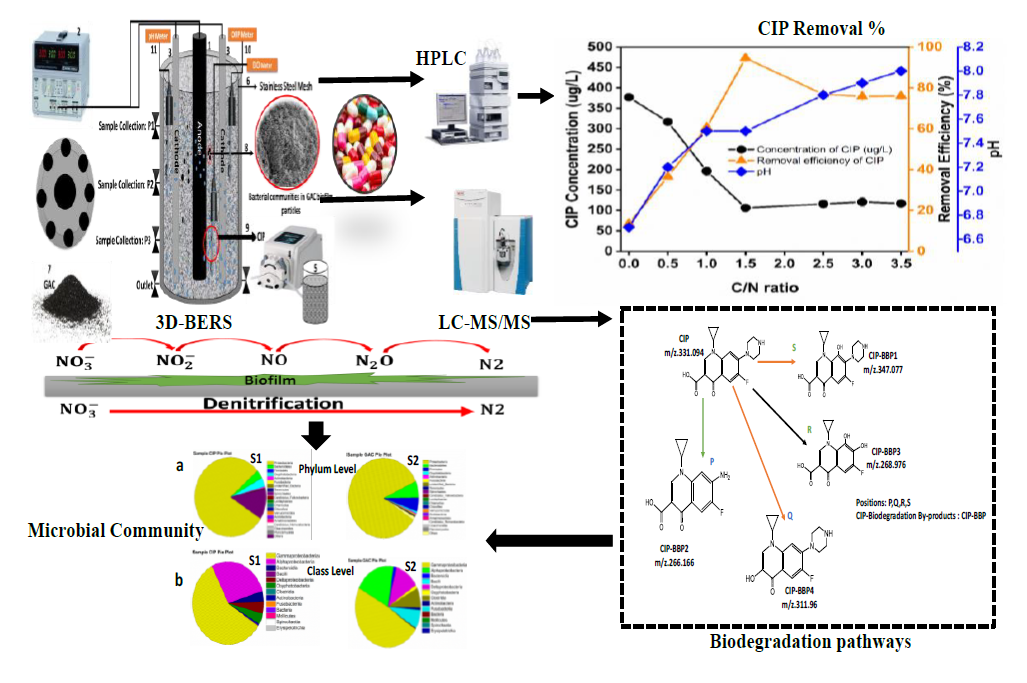Emerging pollutants as pharmaceuticals have been focusing international attention for few decades. Ciprofloxacin (CIP) is a common drug widely found in effluents from hospitals, industrial and different wastewater treatment plants, as well as rivers. In this work, the lab-scale 3D-BER system was established, and more than 90% of the antibiotic CIP removal from the Low C/N wastewater. Best results were obtained with current intensity, and different C/N ratio significantly improve the removal of CIP and nitrates, when the ideal conditions were; C/N = 1.5-3.5, pH =7.0-7.5, and I = 60 mA. The highest removal efficiency of CIP = 94.20 %, NO3--N= 95.53 % and total nitrogen (TN) = 84.27 %, respectively. In this novel system, the autotrophic-heterotrophic denitrifying bacteria played vital role for the removal of CIP and enhanced denitrification process. Thus, autotrophic denitrifying bacteria uses CO2 and H2 as carbon sources to reduce nitrates to N2. This system has the assortment and prosperous community revealed at the current intensity of 60 mA, and the analysis of bacterial community structure in effluent samples fluctuates under different condition of C/N ratios. According to the results of LC-MS/MS analysis, the intermediate products were proposed after efficient biodegradation of CIP. Microbial community on biodegrading was mostly found at phylum, and class level was dominantly responsible for the NO3--N and biodegradation of CIP. This work can provide some new insights towards the biodegradation of CIP and the efficient removal of nitrates from low C/N wastewater treatment by the novel 3D-BER system.

